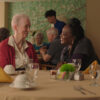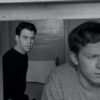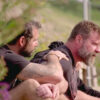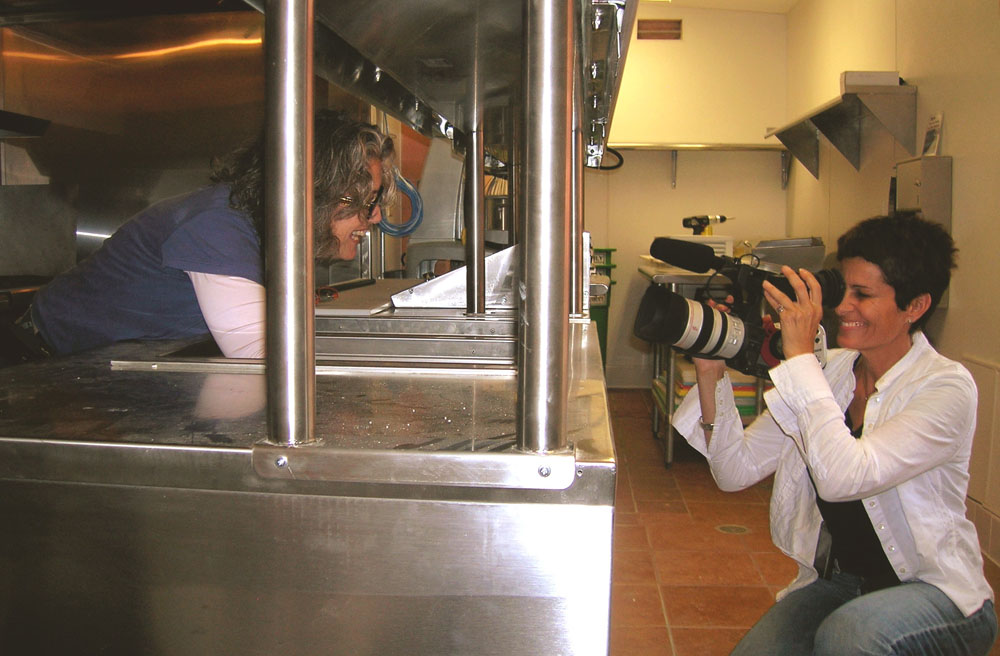When Liz Lachman was looking over the footage that she shot of her longtime partner and legendary chef Susan Feniger around the time of her opening the beloved Highland Avenue hangout Street in 2009, she realized there was a glaring hole in what she had filmed of Feniger preparing for the restaurant, a missing ingredient, if you will, as the director considered turning the home movies she had shot into a feature film – and that would be the food itself.
“I am not a food person,” Lachman admits, ultimately having to turn to someone else in the present day to observe Feniger preparing some of her inventive signature dishes such as Burmese Melon Salad for “Forked,” a delicious doc that doubles as about as admiring a love letter to her better half as you’ll find. “My palate has been refined after all these years with Susan, but it still doesn’t make me care deeply. I don’t know, it’s just me. I have other things that I care deeply about like Alfa Romeos and comic books.”
After making me laugh with her dry sense of humor, Lachman credits that ability for her enduring relationship with Feniger in spite of her mild indifference to what she does for work, and it ends up being such a key part of “Forked,” with the joke ending up on the filmmaker in some ways when after primarily working in fiction, she didn’t immediately feel she was the right person to tell Feniger’s story, yet knowing that something incredible was happening right in front of her, she inevitably picked up her camera. The result is an incredibly intimate look at how Feniger and Kasja Alger, the co-chef and co-owner of Street, as they developed new recipes for the groundbreaking L.A. restaurant that can now be seen as being before its time when it opened and closed before fusion cuisine became all the rage.
While the film instantly asserts itself as a must-see for anything thinking about joining the merciless culinary industry as Feniger is called on to reinvent Indian Vada fritters while overseeing restaurant floor plans, losing money on every second the space is leased but awaiting its new upholstery, it tells a broader story of someone trying to reinvent herself when Feniger first rose to fame as part of a duo with Mary Sue Milliken, who would parlay their acclaim in L.A. dining circles with such restaurants as City Cafe and Border Grill into the local radio show “Good Food” and eventually one of Food Network’s pioneering programs “Too Hot Tamales.” Street was Feniger’s first foray apart from Milliken – the two would reunite for the current Santa Monica hotspot Socalo — and “Forked” follows Feniger as she travels the world in search of new flavors and inspiration to bring back to Los Angeles where she’d blend cultures into the cuisine for a city that’s always been a melting pot.
As frustrating as launching a new restaurant from the ground up can be, Feniger’s joie de vivre has always been infectious and “Forked” may have the chef arriving at the conclusion that a restaurant that wasn’t able to keep its doors open was a failure, but Lachman allows one to see it for the success that it was beyond whatever happened inside its walls when everyone’s passion comes through and carries them into the future. With the film recently making its debut on the festival circuit with stops at the Newport Beach Film Festival, Reeling: Chicago’s LGBTQ Film Fest, and La Femme, Lachman generously took the time to talk about it en route to the Austin Film Fest this week and how she found herself sitting on a gold mine after putting the original footage of Street for years.
What happened was Susan decided she wanted to do her own restaurant separate from Mary Sue and because she was doing it separately, she couldn’t really use the kitchen in the restaurants they shared for recipe testing or their staff or any of the organizational things, so everything had to be done out of our home. And I thought she’s at the top of her field, and she’s got to start over like a newbie and somebody should record this. I didn’t mean me. [laughs]
And then you had all this great footage around Street, but it sat around somewhere for years. What made you want to revisit it?
Someone said to me, “This sounds like an amazing film. You should look at the footage again and see if there’s a film there.” This is after a few years, and I spent a couple of weeks looking at the footage, thinking, “I don’t see how there’s a film because I’m in it” because I’m holding the camera, she’s talking to me, and she’s holding out [food, saying], “Here, taste this” and “Liz, what do you think?” I didn’t think that I could make a film if I’m being referenced. But then I saw “Meet the Patels,” and I loved that movie. I thought, “Wait a minute, maybe there is a way for the filmmaker to be in the film. Maybe we could just bend the rules, break the fourth wall a little bit,” and then I started to really think, “Okay, maybe this could be a film.” Then I gathered together all the footage we had when she was street food tasting in Vietnam and in Shanghai footage and Singapore, and I thought, this is really actually a cool journey if I put all of everything that she did to get to that opening [of Street] and everything afterwards. I didn’t shoot anything after the opening party of Street, so it took me a little bit to figure out what is the beginning, middle and end of this story.
Then Susan and I were taking a walk one night and she said to me, “I think that after closing Street, it made my relationship with Mary Sue even better.” And I’d never heard her say that, and I thought, “Oh my God, that’s my film. They start together, she goes off on her own, she has her journey, and her journey deepens her ability to have this relationship with Mary Sue in a bigger, better way. So she learned and I learned and then I had my story.
It’s so great to see her back-and-forth with Mary Sue again, particularly in how you create this either/or game between them of their preferences that you film separately. How did that come about?
I had that in my brain for years, ever since I knew that I wanted to make a film out of this. I think I was at a Dodger game and with one of the players up on the big screen, they were asking him these quick questions, like “ketchup or mustard?” And I thought, oh my gosh, I could do that with Susan and Mary Sue and split the screen. It would be so funny, and it really does show not tell.
You end up striking this really nice balance where it’s just informal enough to be inviting and feel personal. What was it like figuring out how much to polish this?
That’s me, and what I saw was that I had the camera so Susan was always trying to make me laugh, so it was already informal. I see a lot of documentaries where a lot of it is talking heads and I thought, I don’t want this to be that way. I want this to be verite where we just follow her and we feel her feelings and discover things as she does. But because there was this juxtaposition between the beautifully shot interviews, which I did not shoot, and my footage, which was like all over the place, I thought I do have to acknowledge that, so I wanted it to be understood very early on, “This is a mess and buckle up” and I thought if I just say that, it’ll give people the tone right away and make them laugh. So I use those [title] cards, not only as chapter openings, but also a way to reinforce my humor, so it’s like, “Don’t worry, we’re okay here.”
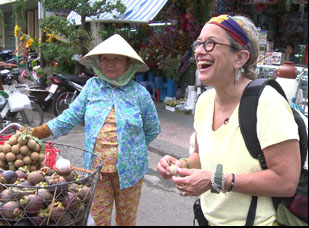
I really was. The good news is Joan Gill Amorim, the editor, was in London, so I would get up at four in the morning and cut with her over Zoom, so we were pretty undisturbed. And Susan would come around 7.30 and bring me a coffee, and then I would shoo her away. “You’re not allowed to see this.” [laughs] And Joan cut our producer Lisa Donmall Reeve’s prior movie, “Uprooted: The Journey of Jazz Dance,” which was brilliant, and I had interviewed dance movie editors for this film, [which] I didn’t do on purpose, but after a couple of interviews, I thought, “Hey, that’s weird. They both cut dance movies.” But there is a rhythm to this film that I feel, so I wanted someone who can cut rhythmically.
You actually have quite the background in music editing. Did you know what it would sound like in relation to how it’s cut to get that rhythm?
The composer is Miriam Cutler, [who] did the music for “RGB” and “Gabby Giffords [Won’t Back Down]” and she was so excited to do this. She’a friend, but one of the reasons I wanted to work with her is because she used to be in a jazz band. I’m also a big Django Reinhardt fan, so Miriam came up with the idea of using his music as the Susan and Mary Sue theme, and they fit together beautifully.
And I started out as a singer-songwriter, and I used to sing Big Band, so I have such a love for big band music and there is a very famous Benny Goodman piece called “Sing, Sing, Sing.” That piece goes wild. It’s out of control, like a train is running off the tracks. And I felt like for me, I really wanted that feeling during the construction [of Street] because that was out of control. Everything’s going wrong, but the construction keeps going and there’s nothing you can do to stop it. I was the music editor on the film because I’ve had so many years of placing music, and I knew that the kitchen — the sound, that’s all very rhythmic and it is its own music, so I knew ahead of time there wasn’t going to be a whole lot of music in this film. But because of my experience, working with so many great composers and films, [I knew where] to place the music [because] I see so often in films the music comes in, and they’re either leading the audience, telling the audience what to feel, and I’m like, “Why don’t you trust your audience? Why don’t you trust your actors? Let the thing play.”
What’s it been like getting this out into the world?
It’s really gratifying because the audiences are getting every joke and they’re even gasping at surprise moments in all the right places, and a number of people have told me that they teared up at certain parts too. I’ve actually teared up a number of times, and there are moments where you can’t help it. And that is due to, you know, Joan and I worked so well together and she cut some beautiful stuff, so if you have a great editor and a great story and Susan is so personable and charming and hilarious, [a story] doesn’t exactly tell itself, but it does make it easier.
“Forked” will screen at the Austin Film Festival on October 27th at 3:30 pm at the Hideout.
